
Strategic Leadership in Executive Talent Acquisition: Cultivating a Legacy Through C-Suite Driven Employer Branding
Table of Content
- Introduction
- The crucial role of leadership engagement in employer branding strategy
- Advanced employer branding strategies: Best practices for C-suite to attract top executive talent
- Crafting a distinctive employer brand to attract executive talent: Strategies and best practices for executive search providers
- Case studies of visionary leadership and employer branding in executive talent attraction
- Conclusion
Introduction
As the battle for top talent intensifies, how can C-suite leaders not only champion but truly embody the essence of their company’s brand to inspire, attract, and retain the visionary leaders of tomorrow? This query lies at the heart of our discussion.
We now take forward from our previous blog – The Strategic Edge: Understanding the Role of Employer Branding in Elevating Executive Talent Acquisition – where we uncovered the undeniable significance of employer branding in executive talent acquisition, we will now delve into unpacking the vital role of strategic leadership in cultivating an employer brand that resonates with high-caliber executive talent, and the implications for executive search providers.
The crucial role of leadership engagement in employer branding strategy
Executive talent acquisition is no longer synonymous with a prestigious title and a lucrative compensation package that were earlier sufficient to attract the crème de la crème of leadership talent. Today, potential executives scrutinize an organization’s brand and reputation, its stance on critical issues such as diversity and sustainability, and its commitment to innovation and ethical governance. Scrutiny extends beyond the confines of corporate reports and public statements to include a keen observation of the C-suite’s involvement and authenticity in embodying the organization’s values.
Against this backdrop, the relevance of the C-suite’s involvement in employer branding emerges as a critical pillar in the strategic architecture of executive talent acquisition. Leadership’s engagement in this process has shifted from being a peripheral activity to a core strategic function that directly impacts the organization’s ability to attract transformative leaders.
From representation to embodiment: The C-suite must move beyond merely representing the company’s values to actively embodying and communicating them. A deep, authentic commitment to the organizational ethos significantly influences potential executive candidates’ perception and decision-making.
A new era of transparency: The changing domain of executive talent acquisition calls for unprecedented transparency and authenticity from the top. Potential leaders are looking for signs that the company’s leadership is genuinely committed to the values it espouses. Transparency strengthens trust besides creating a sense of shared purpose and vision, essential components in attracting executive talent in today’s market.
Strategic alignment and brand advocacy: The C-suite’s role extends to ensuring a strategic alignment between the employer brand and the organizational mission, making the company an attractive proposition for executive talent. This involves a shift from passive brand endorsement to active brand advocacy, where leaders leverage their influence to champion the company’s culture, mission, and values both internally and externally.
The transformation in talent acquisition, particularly at the executive level, is leading to a reimagined role for the C-suite. It demands strategic engagement and authentic leadership to cultivate an employer brand that resonates deeply with the aspirations of potential executives. More than attracting talent, it is about inviting leaders to be part of a journey that aligns with their personal and professional ethos, thus driving mutual growth and success. The future of executive talent acquisition hinges on this nuanced understanding and strategic involvement of the leadership, requiring them to shed traditional practices and adopt a more visionary, value-driven approach.
Struggling to Find the Right Leader?
Advanced employer branding strategies: Best practices for C-suite to attract top executive talent
Drawing on the insights of seasoned executive search providers, B2B research, and experts in the industry, a comprehensive approach for the C-suite in leveraging employer branding rests on the following pivots:
Strategic vision communication: Executives are looking for more than a job—they are looking for a vision they can believe in and contribute to significantly. The C-suite should articulate not only the current state of the company but also its long-term strategic vision. It must highlight how an executive can influence the company’s future and their potential legacy within the organization. Engaging storytelling that connects the company’s milestones and future goals can be particularly compelling.
Leverage personal branding and visibility: C-suite members should use their personal branding to attract executive talent. This includes being active on professional social networking sites like LinkedIn, speaking at industry events, and publishing thought leadership content. By doing so, they not only amplify their company’s brand but also build a direct rapport with potential candidates who value leadership visibility and accessibility.
Transparency and authenticity: When engaging with potential executive candidates, C-suite leaders should prioritize transparency about the challenges and opportunities within the company. Authentic discussions about the company’s current position, the industry landscape, and where a candidate’s role can drive impact, build trust and facilitate alignment of expectations from the outset.
Customized engagement: High-level candidates appreciate a recruitment approach that acknowledges their unique skills and achievements. The C-suite can facilitate tailored recruitment experiences by involving themselves directly in the conversation with candidates, customizing communication to reflect the strategic importance of the role and the specific value the candidate would bring.
Cultivate a culture of leadership excellence: Potential executives will evaluate both the role as well as the environment they will enter. The C-suite should showcase a culture that fosters leadership development, values diverse perspectives, and encourages strategic innovation. Sharing stories of leadership successes, mentorship programs, and strategic wins within the company can be very attractive to executive talent.
Offer strategic involvement from the start: To attract executive candidates who are eager to engage in meaningful work, the C-suite should offer opportunities for candidates to provide insights or engage in strategic discussions even during the recruitment process. This might involve discussing hypothetical business scenarios, sharing strategic challenges, or inviting feedback on business plans, making candidates feel valued and engaged from the start.
Highlight executive impact: Use real examples to show how executives can influence change and drive success within the company. These could be transformative projects, leadership in driving company culture, or strategic pivots that have led to new growth opportunities. Demonstrating how executives can truly impact the company has a strong pull.
This is also termed strategic personalization in outreach. Developing personalized outreach strategies that speak directly to the career aspirations and achievements of potential executive candidates is very impactful.
Showcase company resilience: Executives are attracted to companies that demonstrate resilience and adaptability in the face of industry changes and challenges. Share stories of how the company has navigated past challenges, underscoring the leadership team’s role in those achievements.
Utilize advanced talent analytics: Leverage talent analytics to gain insights into the preferences and behaviors of potential executive candidates. Use these insights to refine your employer branding and recruitment strategies, ensuring they are as targeted and effective as possible.
Promote work-life integration: Highlight initiatives that support work-life integration for executives, such as flexible working arrangements, wellness programs, and family support. These aspects are increasingly important for attracting top talent seeking a balanced executive lifestyle, especially the millennials and Gen Z.
Highlight social responsibility and ethics: Emphasize the company’s commitment to social responsibility and ethical business practices, such as diversity and inclusion, generational diversity. The new breed of executives, in line with the generational shift in the workforce, today is looking for organizations that not only succeed financially but also contribute positively to society and adhere to high ethical standards.
Engage through high-value content: Develop and share high-value content that appeals to executive interests and challenges, such as whitepapers, industry analyses, and leadership insights. This positions the company not only as an attractive employer but also as a thought leader in its field.
Leverage executive search provider expertise as a strategic asset: Partnership could boost talent acquisition. Viewing executive search providers not merely as external vendors but as strategic partners in talent acquisition can help the C-suite develop incisive strategies. Leveraging their deep market insights, specialized expertise, and established networks can uniquely position the organization to attract high-caliber executive talent efficiently and effectively.
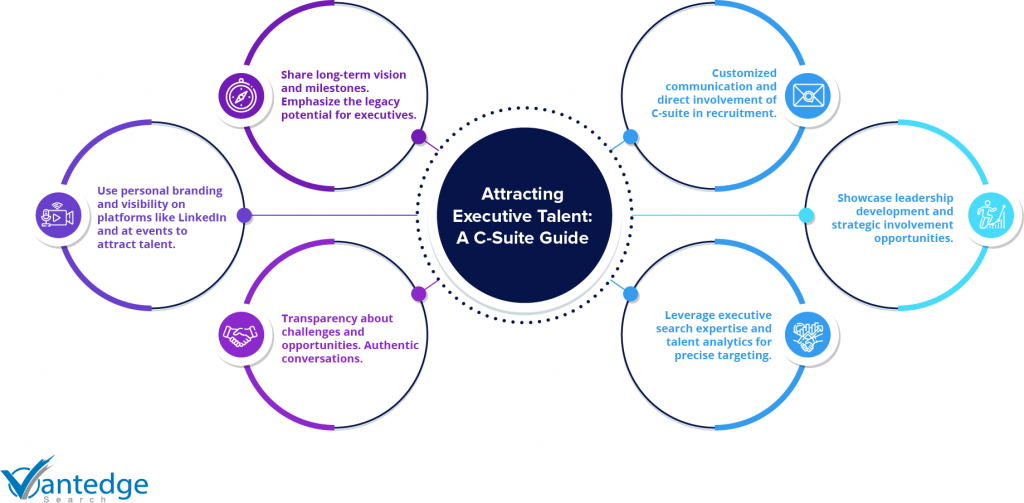
Crafting a distinctive employer brand to attract executive talent: Strategies and best practices for executive search providers
As an executive search provider, your role in helping organizations build a strong employer brand to attract high-potential executive candidates involves a blend of strategic insight, industry expertise, and targeted outreach. Here’s how you can offer invaluable support:
Understanding and articulating the employer’s Unique Value Proposition (UVP)
- Conduct comprehensive search: Start with a deep dive into the organization’s culture, values, strategic goals, and the specific leadership qualities they seek. This will help you articulate a compelling UVP that resonates with high-calibre executive talent.
- Tailor the EVP for executive needs: Customize the Employer Value Proposition to address the aspirations and concerns of executive candidates. Highlight leadership development opportunities, strategic influence, and the potential for impact.
Leveraging data and insights for accuracy in targeting
- Use advanced analytics: Employ data analytics to identify and understand the traits, drivers, and career aspirations of potential candidates. Based on this, you can refine your search and approach strategies effectively.
- Market mapping and talent pooling: Conduct market mapping to identify where the ideal candidates are currently positioned and create talent pools for future opportunities. Taking a proactive approach will ensure you are always prepared with a roster of potential candidates.
Enhancing brand visibility and engagement
- Strategic content marketing: Develop and distribute insightful content that showcases the organization’s thought leadership, culture, and success stories. This content should be tailored to the interests and concerns of executive-level candidates.
- Social media strategy: Leverage professional networking sites like LinkedIn to strengthen the organization’s brand and positioning. Engage with potential candidates through thoughtful content, fostering a community around the organization’s industry leadership and culture.
Building relationships and fostering engagement
- Executive networking events: Organize or participate in networking events and roundtables that cater to the executive community. These events offer a platform for direct engagement with potential candidates and increase brand visibility.
- Personalized outreach and engagement: Employ a high-touch, personalized approach in your outreach to potential candidates. Customized communication that acknowledges their achievements and potential fit can significantly increase engagement and make the organization relatable.
Showcasing commitment to diversity and inclusion
- Highlight DEI initiatives: Ensure that the organization’s commitment to diversity, equity, and inclusion is prominently featured in all branding and communication efforts. This demonstrates a forward-thinking, inclusive culture that is attractive to top talent.
- Diverse candidate slates: Present diverse candidate slates, showing that the organization values different perspectives and experiences at the leadership level.
Providing continuous feedback and strategy refinement
- Ongoing analysis and feedback: Offer continuous feedback to the organization based on candidate interactions and market responses. This is crucial for refining employer branding strategies and ensuring they remain competitive and appealing to executive talent.
- Adapt and innovate: The job market and candidate expectations are always evolving. Stay ahead by continuously seeking innovative ways to enhance employer branding and attract top executives, adapting strategies as necessary to meet changing dynamics and help in making the client organization more relatable.
Case studies of visionary leadership and employer branding in executive talent attraction
The journeys of exceptional CEOs underscore the profound impact of visionary leadership on a company’s brand and its attractiveness to top talent. These narratives not only inspire employees and peers but also serve as a testament to the resilience, innovation, and perseverance embedded within the company culture they lead.
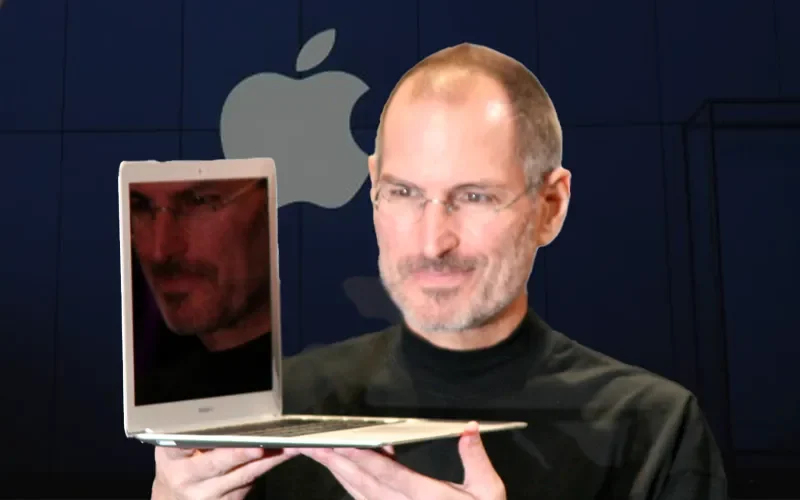
Apple and Steve Jobs’ Legacy: Innovating at the Intersection of Technology and Liberal Arts
Under Steve Jobs, Apple became synonymous with innovation, fundamentally altering expectations within the technology sector and beyond. Jobs’s unwavering belief in the importance of integrating technology with liberal arts attracted executives who were not just tech-savvy but also deeply appreciated creativity and innovation. His vision ensured Apple’s leadership pipeline was filled with visionaries who could carry forward his legacy. For aspiring leaders, the opportunity to be part of a company that continuously pushes the boundaries of what is possible remains an irresistible draw. Apple’s success story emphasizes the significance of a compelling vision in executive talent attraction.
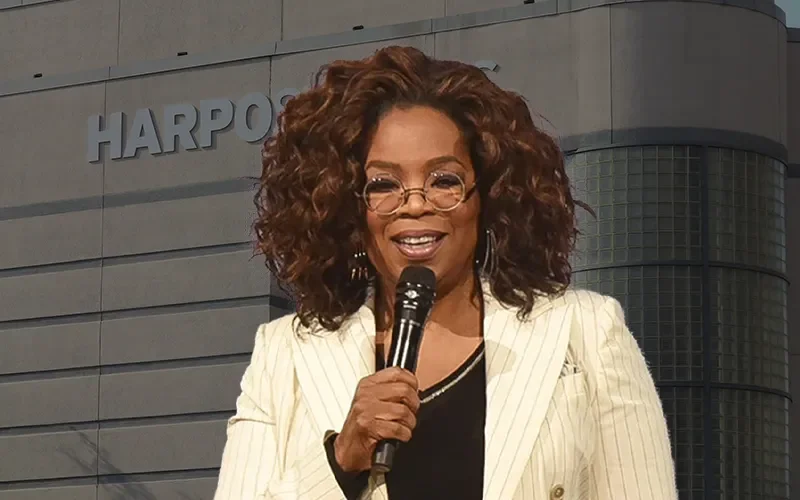
Oprah Winfrey’s HARPO Productions: Authentic Leadership and Purpose-Driven Impact
Oprah Winfrey transformed HARPO Productions into a powerhouse of purpose-driven content, leveraging her personal brand of authenticity, empathy, and social advocacy. For executives, the appeal of joining HARPO lies in the opportunity to work for an organization that prioritizes impactful storytelling and positive social change. Winfrey’s hands-on leadership approach and her commitment to creating an inclusive and empowering corporate culture resonate with executives aiming to make a meaningful difference through their work. Oprah’s journey underscores the power of aligning personal and corporate brands in attracting like-minded executive talent.
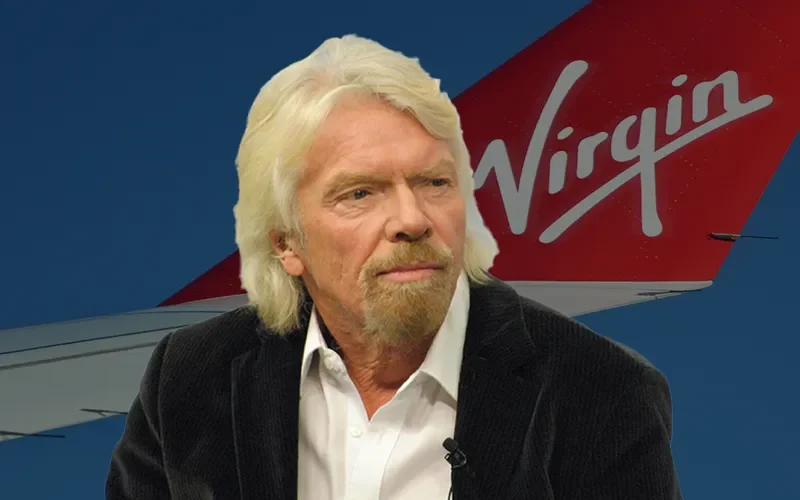
Virgin Group and Sir Richard Branson: Emboldening the Entrepreneurial Spirit
Sir Richard Branson’s Virgin Group thrives on an entrepreneurial spirit that challenges the status quo. Branson’s personal brand—characterized by adventure, risk-taking, and disrupting industries—has been instrumental in attracting executive talent that shares his ambition for innovation. Virgin’s culture encourages executives to think like founders, granting them the autonomy to drive change. The entrepreneurial environment is key for leaders who seek to leave a mark on the global business landscape, illustrating how a strong, personal leadership brand can enhance corporate employer branding in the executive search.
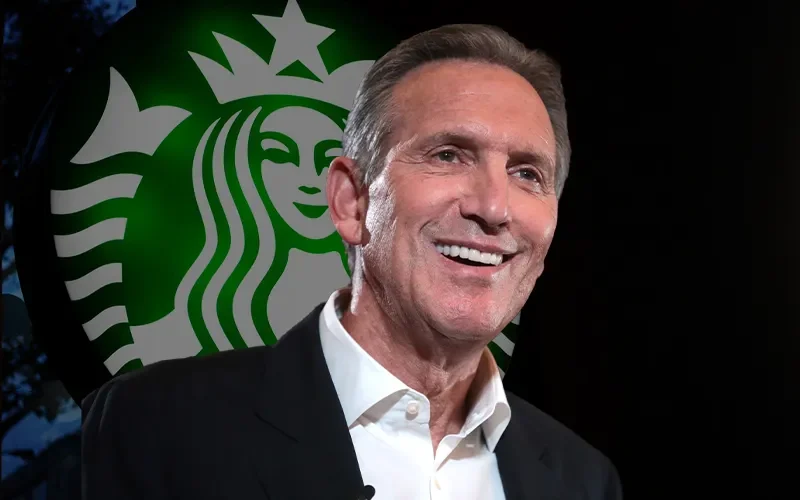
Starbucks and Howard Schultz: Leading with Social Responsibility and Ethical Governance
Under Howard Schultz’s leadership, Starbucks pioneered a company culture that balanced business excellence with compassion and innovation, becoming a strong relatable organization. Schultz introduced groundbreaking initiatives like comprehensive health coverage for all employees and equity through Bean Stock, showcasing a commitment to shared success. His strategic vision propelled Starbucks’s global expansion, nearly doubling its footprint and innovating with Starbucks Reserve® Roastery locations, emphasizing the company’s coffee heritage and customer experience. Schultz’s focus on social responsibility, highlighted by the Starbucks College Achievement Plan and significant efforts to hire military veterans and spouses, reflected a brand ethos that attracts executives who value ethical governance and community impact.
Schultz’s return as interim CEO and transition to chairman emeritus underscored his enduring influence on Starbucks’s mission and values. His leadership accolades, including Fortune’s 2011 Businessperson of the Year and numerous awards for business ethics, along with his thought leadership as a best-selling author, contribute to Starbucks’s reputation as a prime destination for visionary executives. The legacy of innovation, social responsibility, and ethical leadership under Schultz not only shaped Starbucks’s employer brand but also established it as a model for attracting and retaining top executive talent.
Conclusion
As the battle for executive talent intensifies, the strategic involvement of C-suite leaders in employer branding has become a necessity. The shift towards a more transparent, value-driven, and visionary approach in talent acquisition calls for leadership that not only espouses the organization’s values but lives them authentically. By embodying these values, leaders not only attract but inspire the next generation of executive talent, fostering a legacy of innovation, resilience, and strategic success. Through strategic vision communication, personalized engagement, and a commitment to diversity and ethics, organizations can cultivate a compelling employer brand that resonates deeply with the aspirations of potential executives.
The role of executive search providers in this landscape is equally critical. By partnering with organizations to articulate a Unique Value Proposition (UVP), leveraging data for precision in targeting, and enhancing brand visibility, they play a pivotal role in navigating the complex dynamics of executive talent acquisition.
The narratives of exceptional leaders underline the power of visionary leadership in amplifying an employer’s brand. These stories act as testimonials of personal success, but more importantly, they draw like-minded talent, driven by the desire to make a substantive impact.
Are you ready to redefine your organization’s approach to executive talent acquisition? Whether you’re at the helm of a company seeking to enhance your employer brand or an executive search provider looking to elevate your service offerings, the time to act is now. Embrace the strategic, value-driven approach to leadership and talent acquisition. Let’s collaborate to transform your organizational culture, attract visionary leaders, and secure your place at the forefront of industry innovation. Contact us today to begin crafting your legacy through exceptional talent acquisition strategies.


Leave a Reply